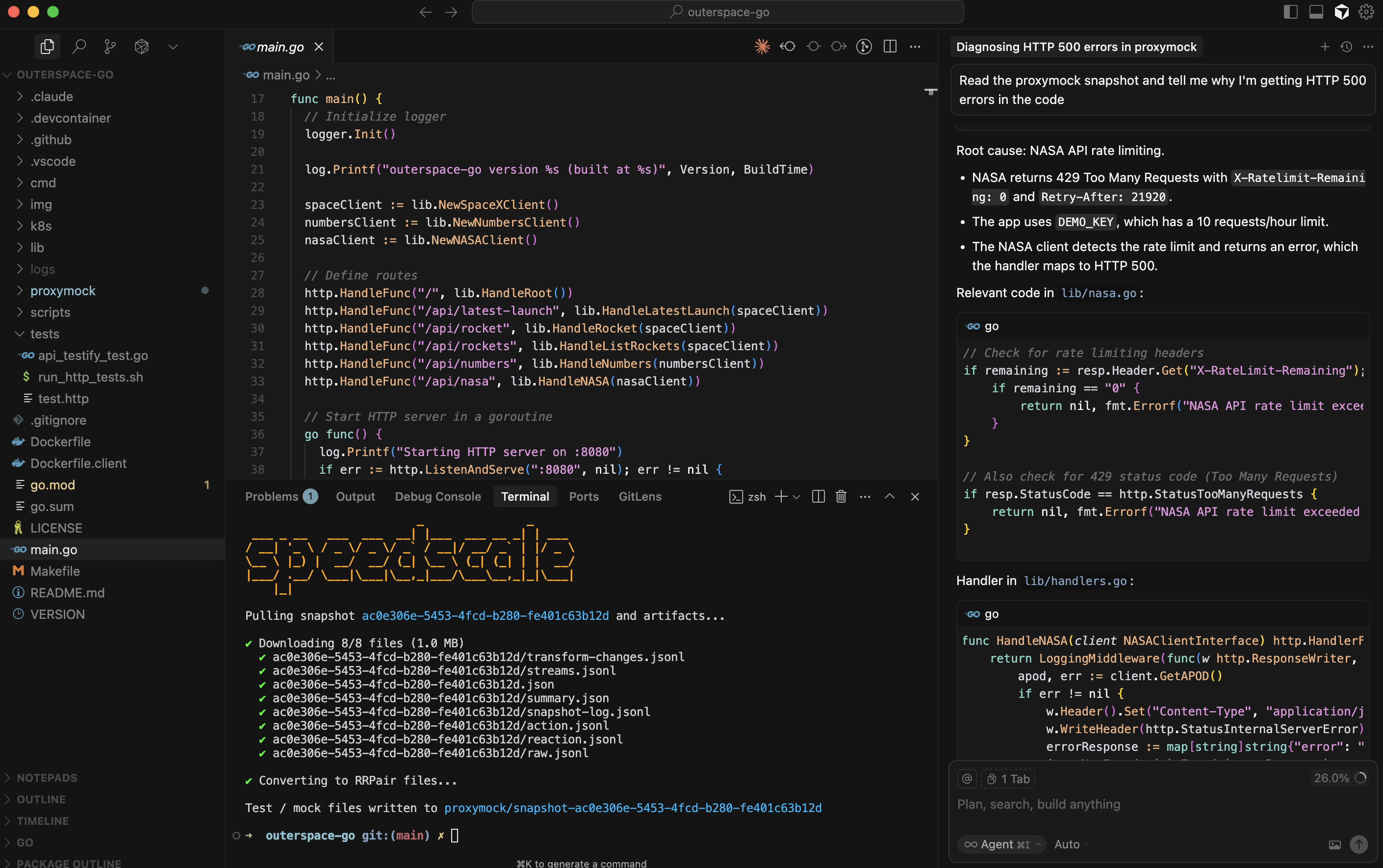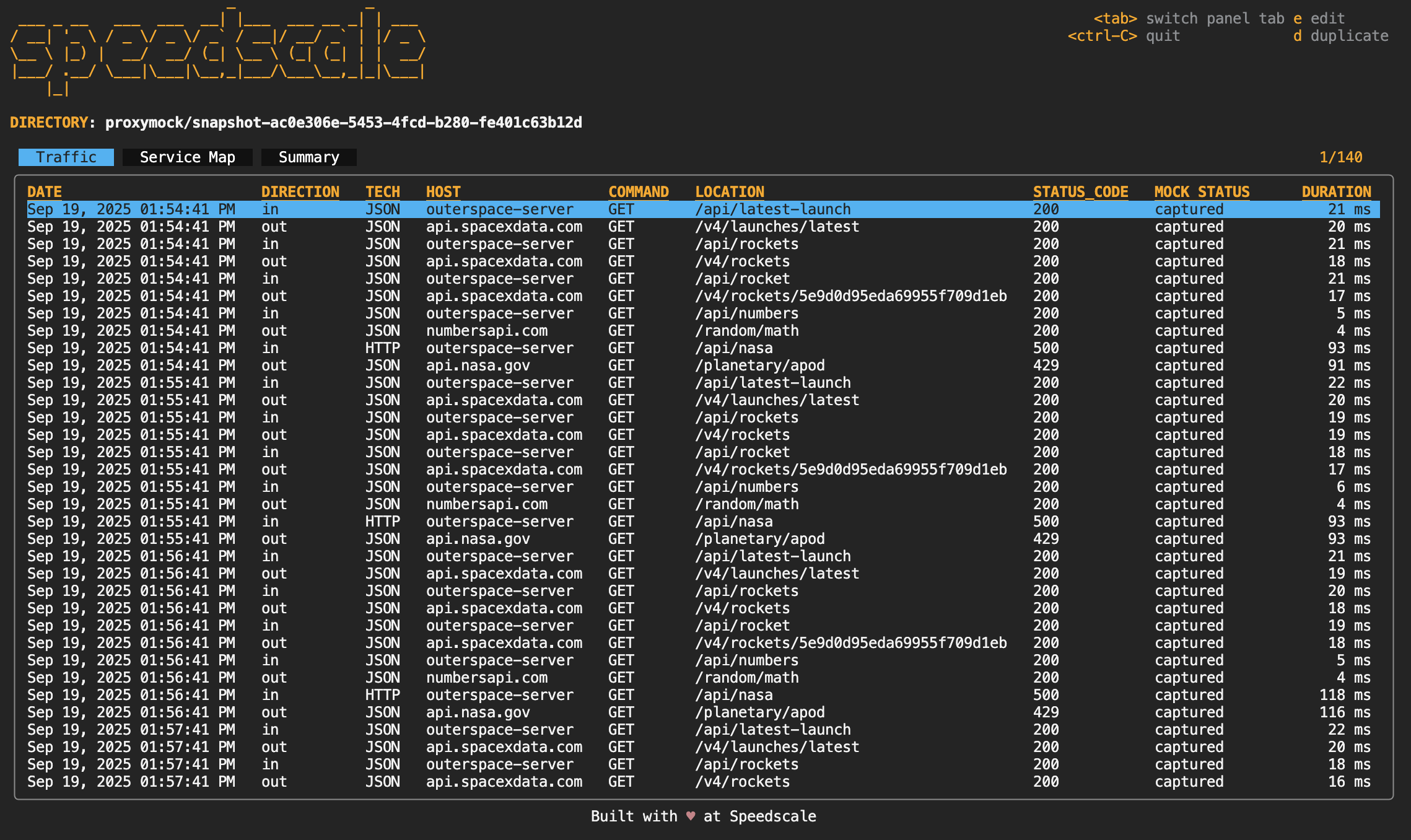Local Recording, Testing and Mocking from Real Traffic
Proxymock watches your app run and automatically creates isolation tests and realistic service mocks—no scripts, no stubs, no flaky envs.
brew install speedscale/tap/proxymock🎯 Capturing 15 minutes from prod-env-1
🚀 Starting mock server
⚡ Running API requests against new app build
😑 Found 3 mismatches, analyzing inconsistencies
proxymock indicates the wrong field changed — fixing...Why Proxymock?
Model Context Protocol (MCP) Enabled
Give your AI model instant access to a realistic test environment. No cloud costs required.
Auto-generates Tests and Mocks
Automatically create comprehensive test suites and mock responses from your production traffic recordings.
Kubernetes, ECS and Desktop API Recorders
Record in one environment and replay in another — no expensive cloud replicas required.
CI Pipeline-Friendly
Integrate seamlessly into your CI/CD pipelines for automated testing and validation at every deployment.
PII Redaction
Automatically detect and redact personally identifiable information to ensure data privacy and compliance.
Tests Regression, Load and Configuration
Comprehensive testing capabilities including regression testing, load testing, and configuration validation.
Recording
Gather real traffic from your application using HTTP/SOCKS proxy, reverse proxy, desktop or even capture. Give your AI coding tool real world data to work with.
HTTP & gRPC
Capture REST and gRPC calls with headers and bodies preserved for replay.
Cloud Services
S3, Pub/Sub and other managed services are recorded for accurate mocks.
Databases
Postgres, MySQL and Redis interactions can be captured and analyzed.
Quickstart
brew install speedscale/tap/proxymock
export http_proxy=http://localhost:4140
export https_proxy=http://localhost:4140
proxymock record -- go run main.go
See the installation docs for more details and language specific instructions.
Testing & Mocking
Turn recordings into fast, deterministic tests and use production‑like mocks to develop without external dependencies.
Run tests
proxymock replay --test-against localhost:3000 --for 1m --vus 10Regression, contract and load from real traffic, quickly fire it up from your terminal.
Start mock server
proxymock mock -- go run main.goRealistic latency and errors; add transforms for chaos and data shaping.
MCP Integration
- 🛡️
Safe, local environment for AI agent tools
- 🧰
Expose replay, mocks and tests capabilities
- 💸
Avoid cloud costs; run quickly on your machine


Deep Visibility
- 🛡️
Get visibility into full details of calls
- 🧰
See API, gRPC, GraphQL, DB queries, etc.
- 💸
Store traffic data as part of the repo
CI Pipeline
Add Proxymock to your pipeline to catch issues before deploy. See full examples in our CI/CD docs.
Start mock server
proxymock mock \
--verbose \
--in $PROXYMOCK_IN_DIR/ \
--log-to proxymock_mock.log &Replay and test
proxymock replay \
--in "$PROXYMOCK_DIR" \
--test-against localhost:$APP_PORT \
--log-to $REPLAY_LOG_FILE \
--fail-if "latency.max > 1500" \
-- $APP_COMMAND